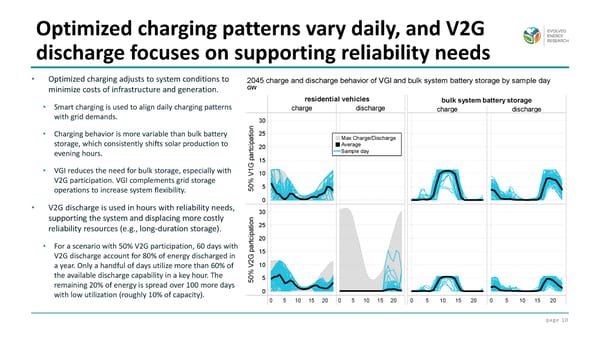page 10 • Optimized charging adjusts to system conditions to minimize costs of infrastructure and generation. • Smart charging is used to align daily charging patterns with grid demands. • Charging behavior is more variable than bulk battery storage, which consistently shifts solar production to evening hours. • VGI reduces the need for bulk storage, especially with V2G participation. VGI complements grid storage operations to increase system flexibility. • V2G discharge is used in hours with reliability needs, supporting the system and displacing more costly reliability resources (e.g., long-duration storage). • For a scenario with 50% V2G participation, 60 days with V2G discharge account for 80% of energy discharged in a year. Only a handful of days utilize more than 60% of the available discharge capability in a key hour. The remaining 20% of energy is spread over 100 more days with low utilization (roughly 10% of capacity). Optimized charging patterns vary daily, and V2G discharge focuses on supporting reliability needs
 Exploring the Value of Vehicle to Grid (V2G) for California Page 9 Page 11
Exploring the Value of Vehicle to Grid (V2G) for California Page 9 Page 11